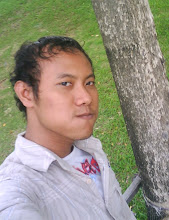Spain is musically as well as culturally a diverse country. Different cultures have left their mark on different parts and also on the same parts of the country, which resulted in a mix and variety of music styles in the whole of Spain.
This website presents an overview of the traditional music of Spain, placed within the broader context of the culture (and history) of Spain.
The overview is per (autonomous) region (and part) of Spain.
In the following order the regions (and parts) of Spain will be described especially concerning
traditional music, placed - as said - in the broader context of the culture (and history) of these regions.
Also some other aspects will be mentioned.
At the end you will find a glossary of terms related to Spanish traditional music.
The regions (in this order):
# the Northwestern regions Galicia, Asturias and Cantabria
# the Basque region (Euskadi): (Northwest/North-Spain)
This website presents an overview of the traditional music of Spain, placed within the broader context of the culture (and history) of Spain.
The overview is per (autonomous) region (and part) of Spain.
In the following order the regions (and parts) of Spain will be described especially concerning
traditional music, placed - as said - in the broader context of the culture (and history) of these regions.
Also some other aspects will be mentioned.
At the end you will find a glossary of terms related to Spanish traditional music.
The regions (in this order):
# the Northwestern regions Galicia, Asturias and Cantabria
# the Basque region (Euskadi): (Northwest/North-Spain)
THE NORTHWESTERN REGIONS GALICIA, ASTURIAS AND CANTABRIA
Celtic peoples from Central-Europe settled here from about 1000 BC. Where in more southern and eastern parts of the Iberian peninsula the Celts agglomerated with the Iberians (and some other peoples), in this part of the Iberian peninsula the Celtic culture and society stayed being dominating. Just as certain Celtic cultural and sociological characteristics survived in these northwestern parts of Spain, many Celtic musical traditions also remain.
Ancient traditional Celtic melody, harmony and rhythm structures still dominate the traditional music from these regions. The instruments also mostly have Celtic origins.
Most commonly used are the bagpipes (called: Gaita in Spain), drums, flutes, harps (especially in Galicia) and the clarinet (in Cantabria). The music often has a melancholic feel, especially in Galicia.
Along with other regions in Europe, such as Ireland, Wales, Scotland, Brittanny, these regions in the northwest of Spain belong to the regions where the ancient Celtic traditions and music survived.
Ancient traditional Celtic melody, harmony and rhythm structures still dominate the traditional music from these regions. The instruments also mostly have Celtic origins.
Most commonly used are the bagpipes (called: Gaita in Spain), drums, flutes, harps (especially in Galicia) and the clarinet (in Cantabria). The music often has a melancholic feel, especially in Galicia.
Along with other regions in Europe, such as Ireland, Wales, Scotland, Brittanny, these regions in the northwest of Spain belong to the regions where the ancient Celtic traditions and music survived.
Galician Gaita (bagpipe)
THE BASQUE REGION (EUSKADI): (Northwest/North-Spain)
The Basques form a people of their own with in fact an unknown origin. They have an own language (of unknown origin) and many ancient traditions and cultural characteristics remain.
Musical traditions also remain. Typically in Basque music is the somewhat collective character of it. Choir-singing is important in a lot of Basque music. Music structures in Basque music often are of ancient origin. The Basques have some unique musical instruments such as the Txalaparta: a wooden instrument consisting of a sort of board(s) played by sticks and with high drum sounds, and the Txistu:originally a shepherd's flute with a somewhat shrill sound and playable with one hand. Another instrument used in Basque music is the Alboka (a type of horn/clarinet).
Musical traditions also remain. Typically in Basque music is the somewhat collective character of it. Choir-singing is important in a lot of Basque music. Music structures in Basque music often are of ancient origin. The Basques have some unique musical instruments such as the Txalaparta: a wooden instrument consisting of a sort of board(s) played by sticks and with high drum sounds, and the Txistu:originally a shepherd's flute with a somewhat shrill sound and playable with one hand. Another instrument used in Basque music is the Alboka (a type of horn/clarinet).
an Alboka played
the Txalaparta played
Other used musical instruments include drums (often combined with the Txistu: with the other hand) and trumpets.




0 comments:
Post a Comment